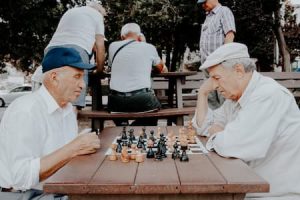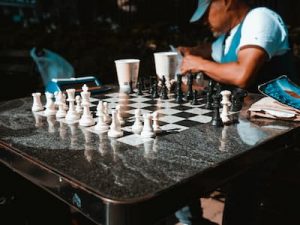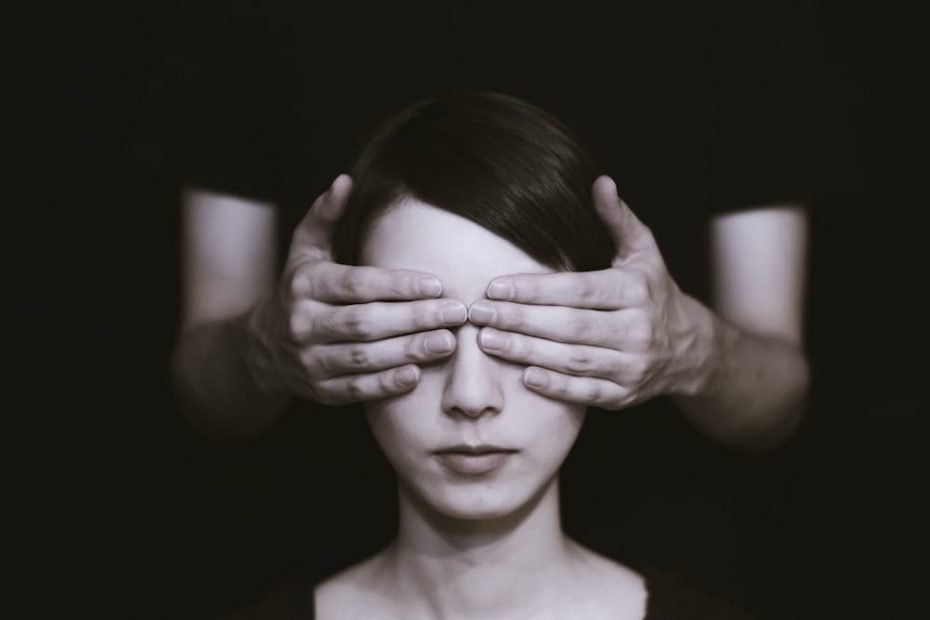Visualization is the only way in chess by which we could look into the future over the chessboard. How often has it happened to you that you made a move and then realized that it was a mistake?
Take a minute and try to think about how many times this has happened. A memory of all the mistakes must have flashed through your mind. Do you want to get rid of it? Then you are on the perfect article!
Unique skills come to your rescue only when your regular skills are matched!
Let me show you how to improve chess visualization.

Table of Contents
Calculating variations without moving pieces
A basic way to improve visualization is to practice calculating variations without moving pieces. Everyone will suggest you this technique as it is the first step to visualization in chess. Initially, you can try to visualize puzzles where the solution is of 2-3 moves. Once you are used to it, try solving puzzles on the topics of mate in 3, mate in 4, mate in 5, etc. This will gradually improve your ability to visualize.
As per my experience, 5-7 AM is an ideal time to practice visualization. There is less disturbance and the early morning is the time when one can concentrate well. Once you can calculate single branch variations, start solving tactics where there are 2 branches to it. for eg., White gave a check and black had 2 options. So here you will be able to learn and practice calculating multiple variations just by visualizing.

Playing training games without a chess set
Arent, you amazed by looking at the above video? If you want to start visualizing like top GMs, get yourself a training partner. A friend who is equally dedicated and wants to improve at chess the way you do. Now whenever you meet, start playing a game without a chess set. How can that be done? is a relevant question. Start speaking out moves like e4-e5 Nf3-Nc6 Bc4-Bc5. This will improve your accuracy of the chessboard and also your visualization of the pieces.
Initially, you will be able to make legal moves till move 10-12(If you manage more than that then you must treat yourself). Then start trying to set traps while playing on visualization. If you practice this technique on regular basis, you will be able to outwork a lot of other players just with your skill of visualization. Slowly you will also learn to predict what your opponent might play next. Once you are able to predict what your opponent plays you can always have an ace up your sleeve for the same!

Chesscom feature of blindfold
Chesscom has introduced a feature called a blindfold. Here you can select the type of pieces as “Blind” and all the pieces will disappear. Once they disappear take a time control of 25+10 a standard rapid format. Play a game against a random opponent and make sure you keep a track of pieces in your mind. Also, make a conscious effort of writing down honestly up to which move did you manage to visualize.
This type of training day in day out will definitely improve your visualization. Also, this is a very addictive habit, once you start playing this way, you might feel bored looking at the regular pieces. So make sure you keep that interest in your

Analyzing games by visualizing
Once you are used to visualizing, you can always make a habit of analyzing your games with your opponents by visualizing. This will give you two conclusions, a) Whether he can match your level of visualization or b) If he outplays you in analysis, it is time to outwork him when you get to training back home. In any case, it is a win-win situation for you. So always have this habit of analyzing games with your opponent by visualizing.
During a game, we tend to calculate variations. While calculating variations you must be able to visualize the correct locations of the pieces. Visualization also needs sincere training and it is possible to get better at it with regular efforts.
Visualizing games from scoresheets
While playing a tournament once your opponent goes into a deep thought you generally tend to take a short walk to see what is the position on top boards, your friend’s boards, etc. whenever you reach the board, try to read the scoresheet and visualize the move order and if possible also try to predict why were those moves played.
For this habit, you can also train at home by taking any scoresheet of your friend (not your game as you already played it and the reasons for the moves are easy to recall) and start visualizing the game. Try guessing the logic behind every move. Write down where were you able to keep a track of the game.
Once you are done visualizing, whatever the last position was, set it up somewhere and then start making moves on the chessboard. Match the position from your mind and position it on the board. If it is exactly the same then Kudos! Your training worked, If not then also don’t worry, You can practice hard and achieve it!!

Make progress
If you put in the regular effort and follow the above methods, then I can guarantee you will see progress in 2-3 months.
Also remember, “Gone is the generation when people used to work out. It’s time to OUTWORK!”
So with consistency, you will definitely achieve your desired visualization skills. Looking forward to reading your progress in the comments section!
